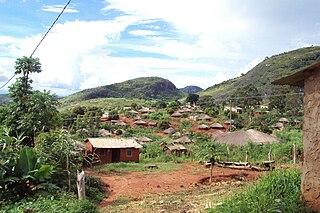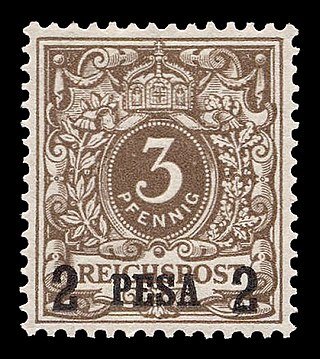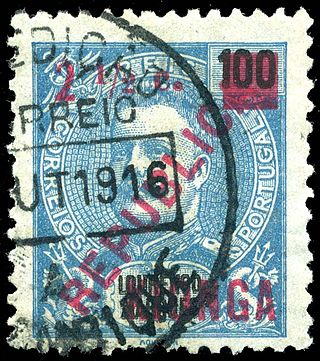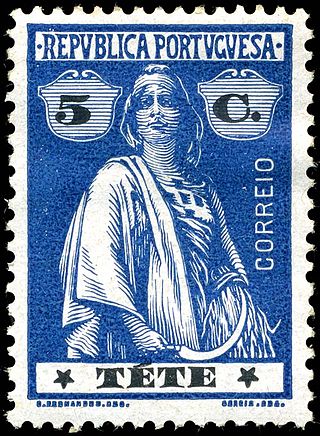
Zambezia is the second most-populous province of Mozambique, located in the central coastal region south-west of Nampula Province and north-east of Sofala Province. It has a population of 5.11 million, according to the 2017 census. The provincial capital is Quelimane.

A war tax stamp is a type of postage stamp added to an envelope in addition to regular postage. It is similar to a postal tax stamp, but the revenue is used to defray the costs of a war; as with other postal taxes, its use is obligatory for some period of time.

This is a survey of the postage stamps and postal history of German East Africa.

On 1 January 1868, Portugal issued postage stamps for the islands of Madeira, consisting of the current stamps of Portugal overprinted "MADEIRA". Subsequent stamps were also overprinted, through 1881.
This is a survey of the postage stamps and postal history of British East Africa.

The Kionga Triangle was a tiny territory on the border between German East Africa and the Portuguese colony of Mozambique, originally Portuguese, but occupied by German forces in 1894, and recaptured by the Portuguese forces in 1916. The triangle was the only German territory that the post-war Treaty of Versailles awarded to Portugal.
As with several other districts of colonial Mozambique, the Portuguese government printed postage stamps specifically for Inhambane for several years. The first issue was for the 700th anniversary of St. Anthony of Padua in 1895, the stamps being those of Mozambique overprinted "CENTENARIO / DE / S. ANTONIO / Inhambane / MDCCCXCV". This was followed up in 1903 by a regular set featuring a portrait of King Carlos and inscribed "IMHAMBANE". The replacement of the monarchy by a republican regime in Portugal in 1910 resulted in a variety of "REPUBLICA" overprints until 1917. Subsequently, Inhambane reverted to the use of the stamps of Mozambique.

The postal history of Portuguese India goes back to the earlier days of the colony. The postal history begins with communication between the Viceroy and the Court at Lisbon soon after the conquest of Old Goa by Afonso de Albuquerque in 1510. Letters, written in triplicate, were carried by separate ships because of the hazards of the voyage. Mail was carried by an overland route, as well. The early communications of Portuguese India had an official character and the correspondence is now to be found in museums and governmental and ecclesiastical archives.

Postage stamps and postal history of the Azores surveys the postal history of the Portuguese archipelago, situated in the north Atlantic.

In 1913 and 1914, Portugal issued postage stamps specifically for Tete Province, now part of Mozambique.
Each "article" in this category is in fact a collection of entries about several stamp issuers, presented in alphabetical order. The entries themselves are formulated on the micro model and so provide summary information about all known issuers.

The Ceres series of Portuguese postage stamps is a definitive series depicting the Roman goddess Ceres that was issued between 1912 and 1945 in Portugal and its colonies.

The early issues from 1853 had the monarch's head, white and featureless, embossed on a coloured background. The most valuable stamps from this period are Gibbons catalogue nos 8 and 9 from the 1853 issue: the 100 reis lilacs.
This is a survey of the postage stamps and postal history of Mozambique.

This is a survey of the postage stamps and postal history of the Nyassa Company.

This is a survey of the postage stamps and postal history of Malawi.

This is a survey of the postage stamps and postal history of Zimbabwe.

This is a survey of the postage stamps and postal history of Guinea-Bissau, formerly known as Portuguese Guinea.

East Timor, officially the Democratic Republic of Timor-Leste, is a country in Southeast Asia. It comprises the eastern half of the island of Timor, the nearby islands of Atauro and Jaco, and Oecusse, an exclave on the northwestern side of the island, within Indonesian West Timor. East Timor was a Portuguese colony, known as Portuguese Timor, until 28 November 1975.















